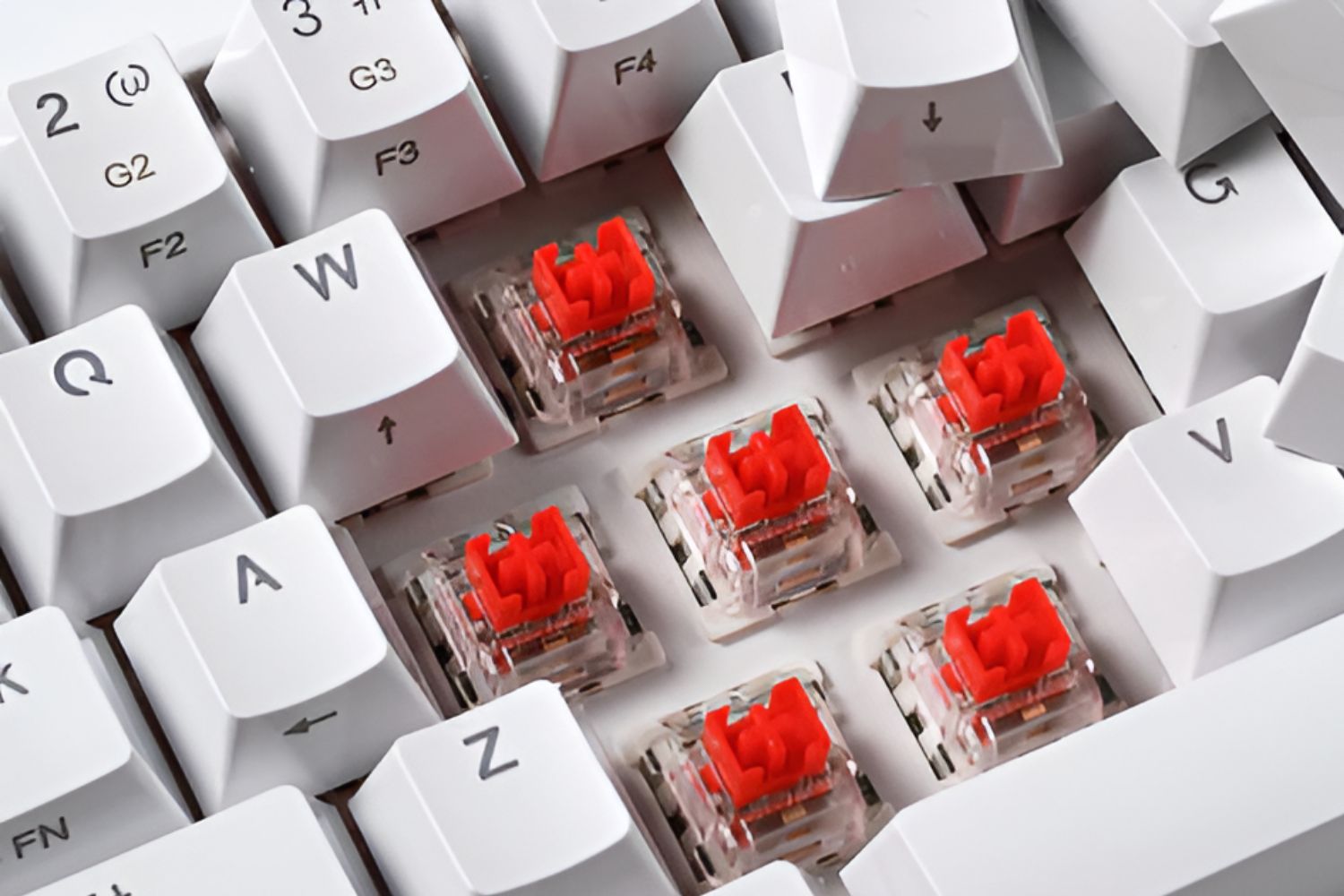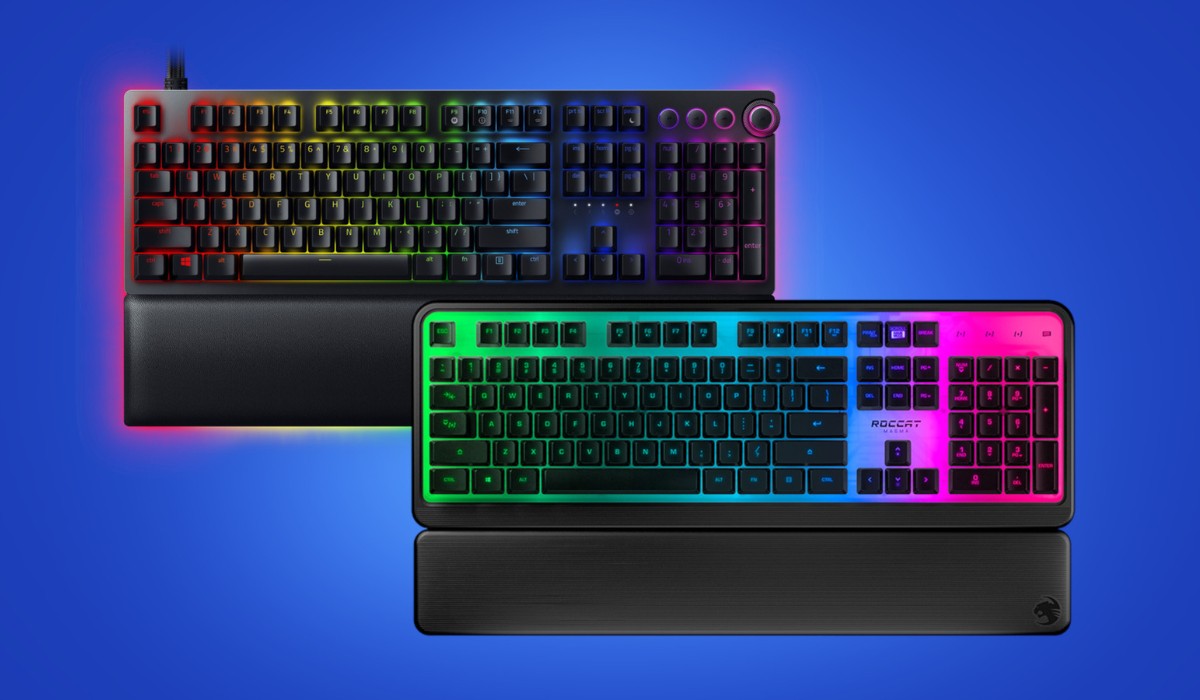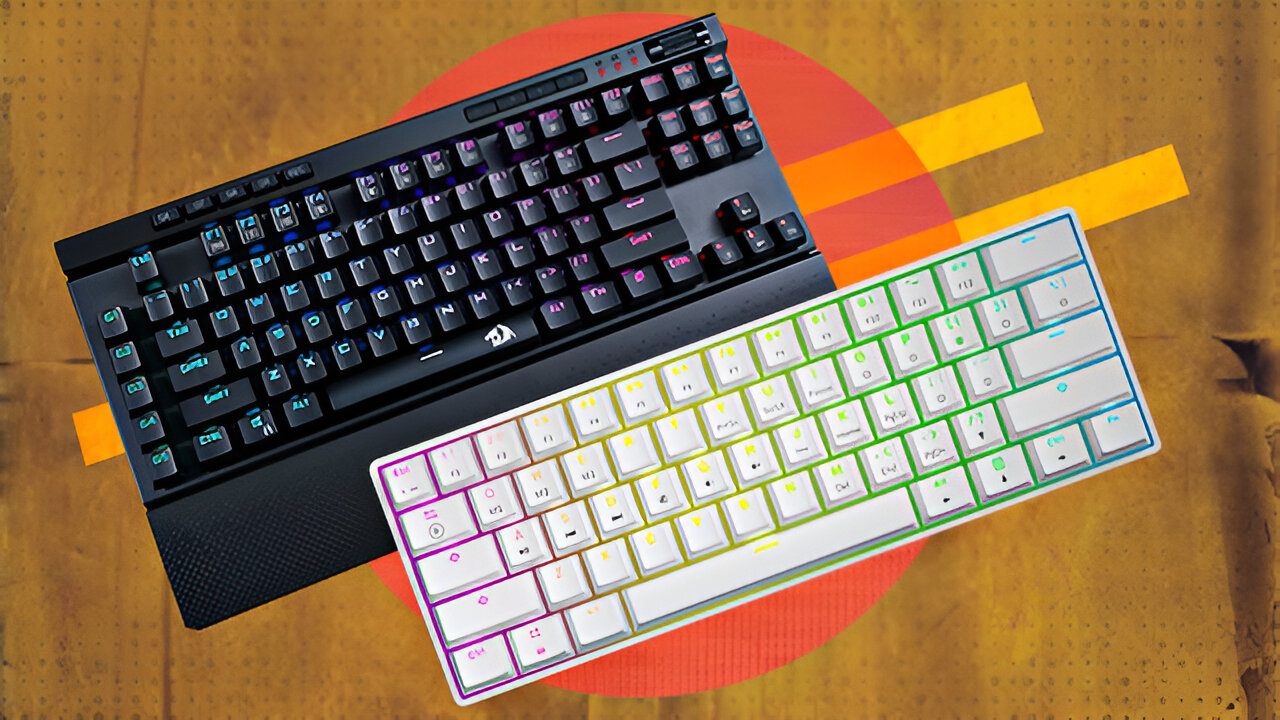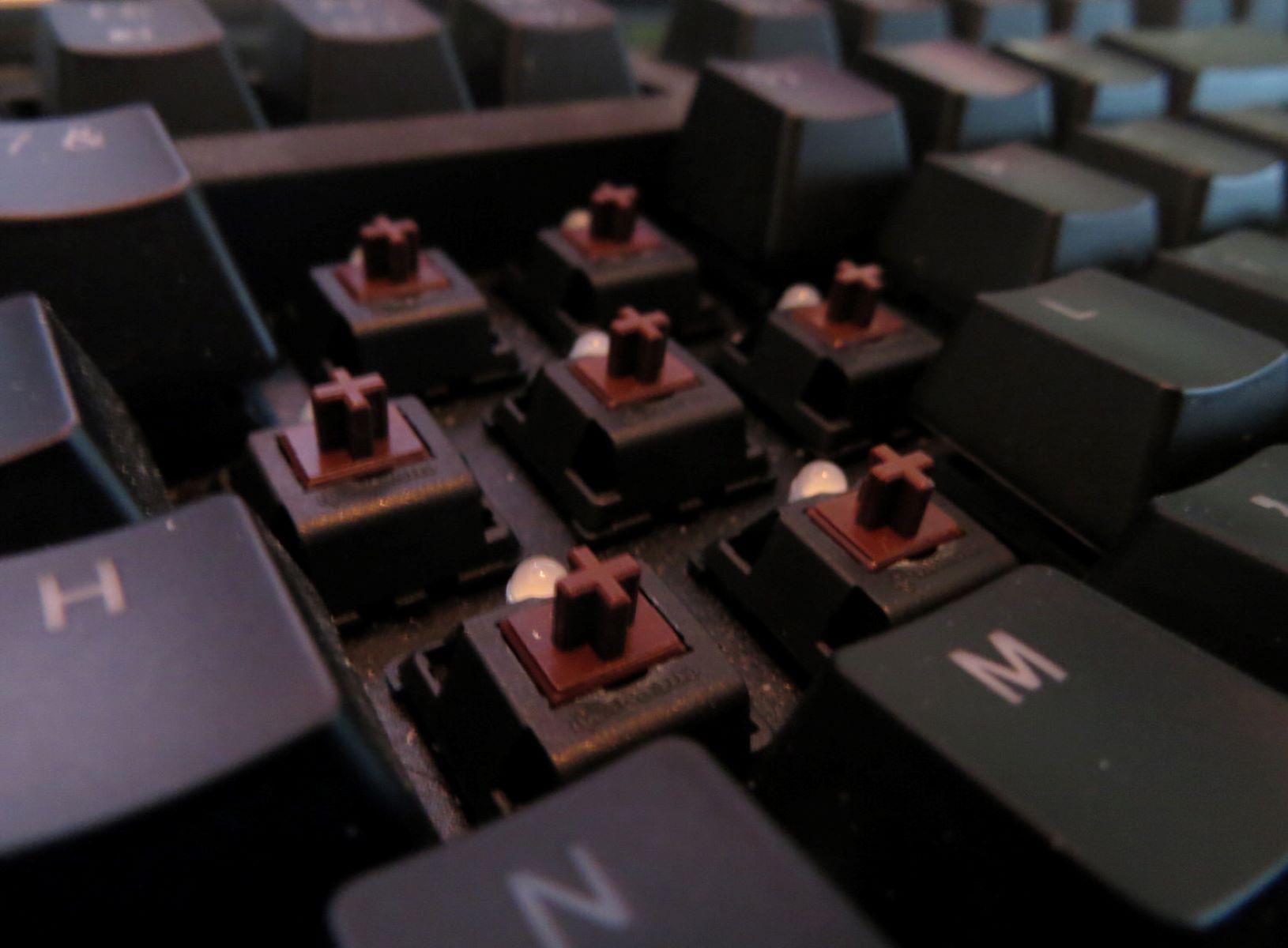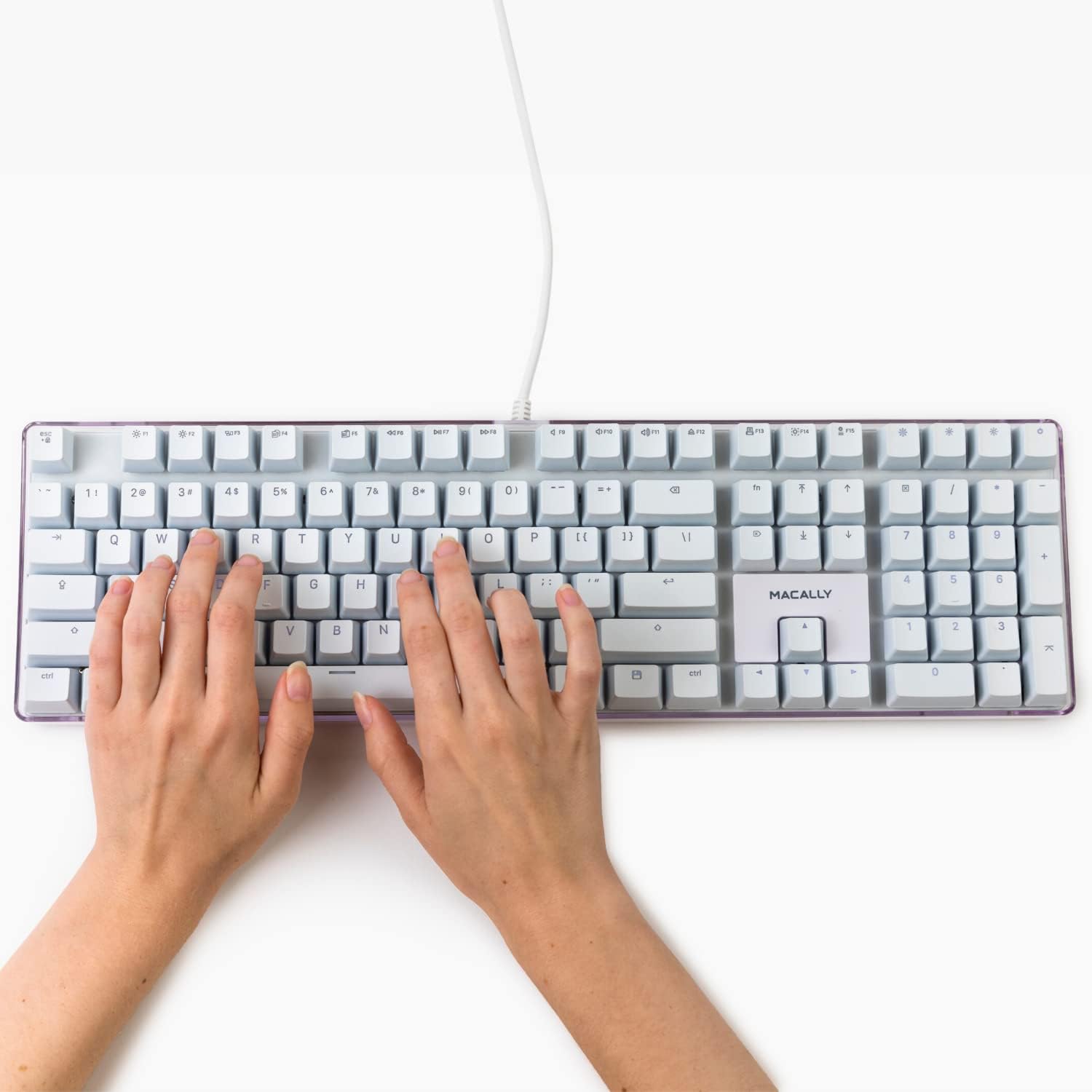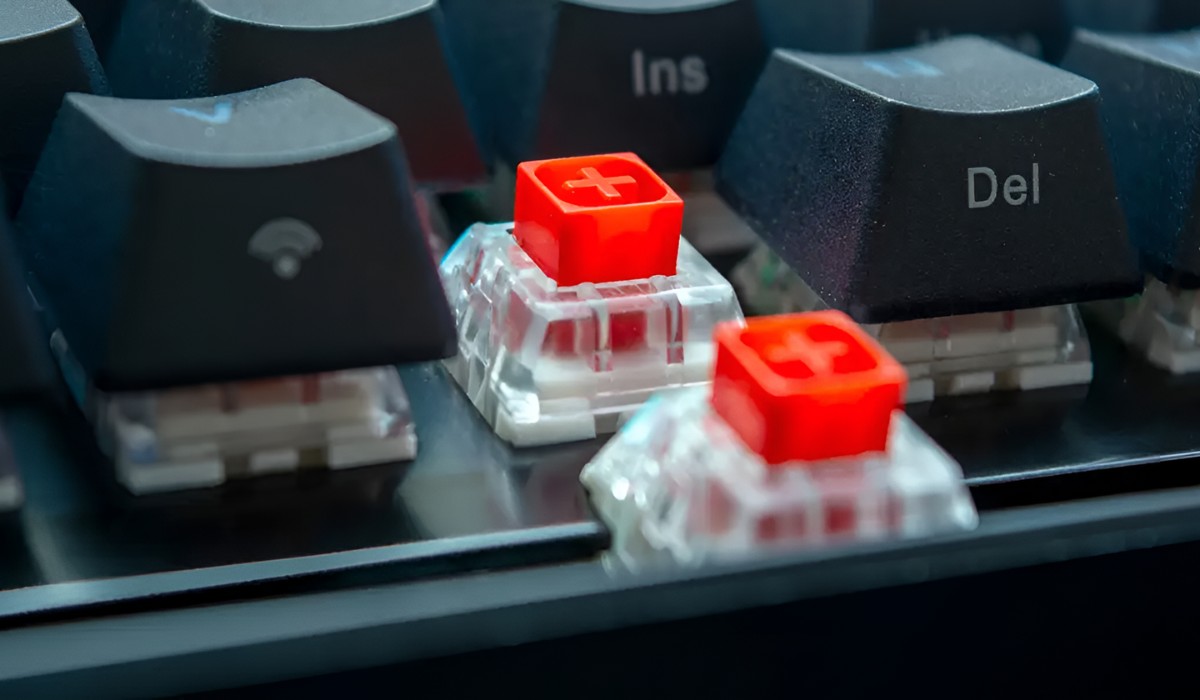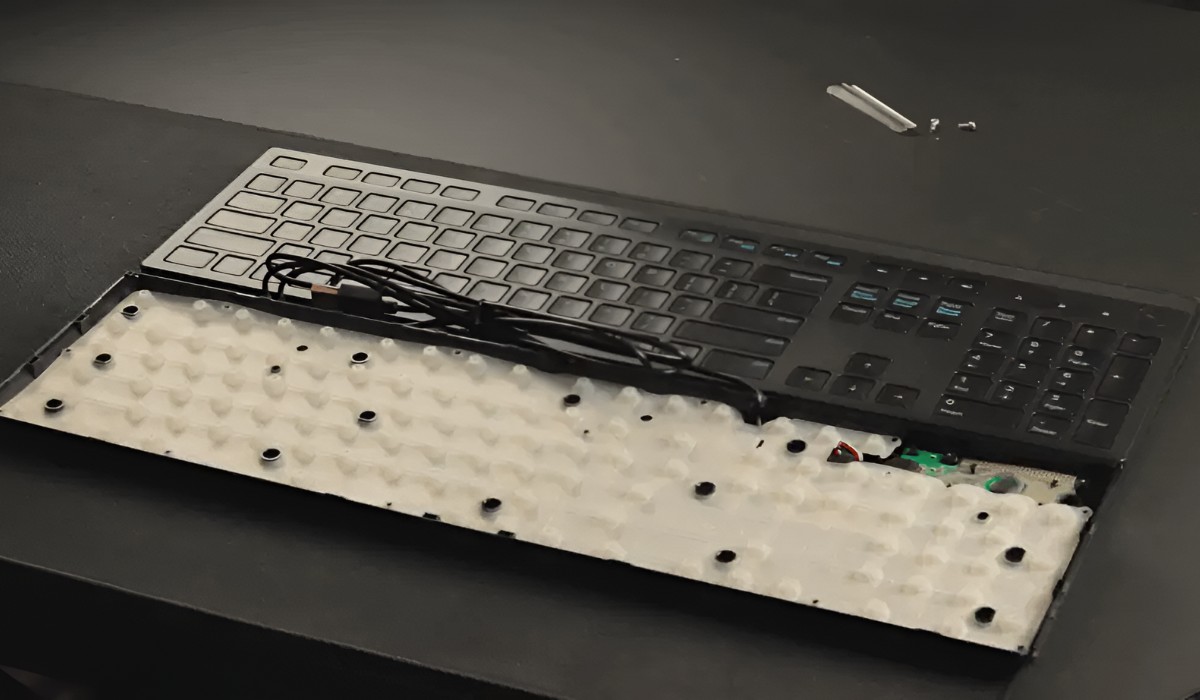Introduction
Welcome to the exciting world of mechanical keyboard switches! If you're in the market for a new keyboard, you've likely encountered the myriad of options available, each boasting unique features and benefits. Whether you're a seasoned typist, a hardcore gamer, or simply someone who appreciates the tactile feel of a well-crafted keyboard, the choice of mechanical switch can significantly impact your typing experience.
In this guide, we'll delve into the fascinating realm of mechanical keyboard switches, providing you with the knowledge and insights needed to make an informed decision. From understanding the intricacies of switch design to exploring the factors that influence your choice, this comprehensive overview will serve as your roadmap to selecting the perfect mechanical keyboard switch for your needs.
So, buckle up and get ready to embark on a journey through the diverse landscape of mechanical keyboard switches. By the end of this guide, you'll be equipped with the expertise to confidently navigate the vast array of options and pinpoint the ideal switch that aligns with your preferences and typing style. Whether you're seeking a switch that delivers lightning-fast responsiveness for gaming or a switch that offers a satisfying tactile feedback for extended typing sessions, we've got you covered.
Before we dive into the specifics of individual switch types and their unique characteristics, let's first lay the groundwork by unraveling the fundamental principles that underpin mechanical keyboard switches. Understanding the inner workings of these switches will not only deepen your appreciation for their intricacy but also empower you to make an informed decision when selecting the perfect mechanical keyboard switch for your setup.
Understanding Mechanical Keyboard Switches
At the heart of every mechanical keyboard lies the switch, a small yet pivotal component that determines the feel, sound, and overall performance of the keyboard. Unlike traditional rubber dome switches found in most standard keyboards, mechanical switches are comprised of individual mechanical components for each key. This design not only enhances durability but also allows for a more customizable typing experience.
One of the defining features of mechanical switches is their actuation mechanism. When a key is pressed, the switch registers the keystroke through a physical actuation, which is typically accompanied by a distinct tactile feedback and audible click. This tactile feedback, often referred to as the switch’s "feel," varies across different switch types and is a key consideration for users seeking a specific typing experience.
Another crucial aspect of mechanical switches is their construction, which directly influences their performance. Most mechanical switches consist of a spring-loaded stem that moves up and down within a housing, creating the familiar sensation and sound associated with mechanical keyboards. The materials and design of the stem, housing, and actuation mechanism play a significant role in determining the switch’s characteristics, such as actuation force, travel distance, and tactile feedback.
Furthermore, the design of the switch also dictates its lifespan and durability. Unlike rubber dome switches that are prone to degradation over time, mechanical switches are engineered to withstand millions of keystrokes, making them a long-lasting investment for avid typists and gamers alike.
By understanding the intricate design and functionality of mechanical keyboard switches, users can gain a deeper appreciation for the craftsmanship that goes into creating these essential input devices. With this foundational knowledge in place, let’s explore the diverse landscape of mechanical keyboard switches and unravel the unique traits that define each switch type.
Types of Mechanical Keyboard Switches
When it comes to mechanical keyboard switches, diversity reigns supreme. There are several distinct switch types, each offering a unique combination of actuation force, tactile feedback, and auditory response. Understanding the characteristics of these switch types is essential for selecting a keyboard that aligns with your specific preferences and usage scenarios.
One of the most popular switch types is the Cherry MX series, which encompasses a range of options to cater to different typing styles. The Cherry MX Red switch, known for its linear actuation and smooth keystrokes, is favored by gamers for its rapid responsiveness. In contrast, the Cherry MX Blue switch is prized for its tactile bump and audible click, making it a preferred choice for typists who crave a satisfying tactile feedback.
Another prominent switch type is the Cherry MX Brown, which strikes a balance between the characteristics of the Red and Blue switches. It delivers a tactile bump without the audible click, making it suitable for both gaming and typing tasks. Additionally, the Cherry MX Black switch offers a linear actuation similar to the Red switch but with a higher actuation force, providing a more deliberate keystroke feel.
Besides the Cherry MX series, there are other notable switch families, such as the Razer Green switch, renowned for its clicky tactile feedback, and the Razer Yellow switch, which features a silent and linear actuation, catering to users who prefer a quieter typing experience. Furthermore, the Gateron switches, known for their smooth keystrokes and diverse color options, offer an alternative to the Cherry MX lineup, providing users with a broader spectrum of choices.
Each switch type exhibits distinct characteristics that can profoundly impact the typing or gaming experience. Whether you prioritize swift actuation for competitive gaming, crave a tactile sensation for prolonged typing sessions, or seek a balance between the two, there’s a mechanical keyboard switch tailored to meet your needs.
By familiarizing yourself with the diverse array of mechanical keyboard switches, you can pinpoint the switch type that harmonizes with your typing style, preferences, and usage requirements, ultimately enhancing your overall keyboard experience.
Factors to Consider When Choosing a Mechanical Keyboard Switch
When embarking on the quest to select the ideal mechanical keyboard switch, several key factors come into play, each exerting a profound influence on the overall typing or gaming experience. By carefully evaluating these factors, you can make an informed decision that aligns with your unique preferences and usage scenarios.
- Typing Style: Consider your typing style and the activities for which you primarily use your keyboard. If you engage in extensive typing tasks, a switch with tactile feedback may enhance your typing comfort and accuracy. Conversely, for gaming enthusiasts who prioritize rapid keystrokes, a switch with a linear actuation may offer a competitive edge.
- Actuation Force: The actuation force, measured in grams, determines the amount of pressure required to register a keystroke. If you prefer a lighter touch and effortless typing, switches with lower actuation forces may be more suitable. Conversely, users who prefer a more deliberate keystroke may opt for switches with higher actuation forces.
- Sound: The auditory feedback produced by mechanical switches varies across different types. Some switches emit audible clicks, while others offer a quieter typing experience. Consider your environment and personal preference regarding keyboard sound, as this can significantly impact your overall satisfaction with the switch.
- Durability: Mechanical switches are renowned for their durability, with most models rated for millions of keystrokes. If longevity is a priority for you, selecting a switch known for its robust construction and extended lifespan can ensure years of reliable performance.
- Customization: Some mechanical switches offer customization options, allowing users to modify aspects such as actuation distance and tactile feedback. If you value the ability to tailor your typing experience to suit your preferences, exploring switches with customizable features may be advantageous.
Furthermore, it’s essential to consider the compatibility of the switch with your keyboard of choice, as certain switch types may be better suited for specific keyboard designs and layouts. Additionally, exploring user reviews and firsthand experiences can provide valuable insights into the real-world performance and nuances of different switch types, helping you narrow down your options and make an informed decision.
By carefully evaluating these factors and aligning them with your individual preferences and usage patterns, you can navigate the diverse landscape of mechanical keyboard switches with confidence, ultimately selecting a switch that elevates your typing or gaming experience to new heights.
Popular Mechanical Keyboard Switches
Within the realm of mechanical keyboard switches, several options have garnered widespread acclaim and popularity, each offering a distinct blend of characteristics to cater to diverse user preferences. These switches have carved out a significant presence in the market, earning praise for their performance, feel, and versatility.
The Cherry MX series stands as a cornerstone of mechanical switches, renowned for its diverse range of options tailored to different user preferences. The Cherry MX Red switch, characterized by its linear actuation and light keypress, has found favor among gamers seeking swift and effortless keystrokes. On the other hand, the Cherry MX Blue switch, celebrated for its tactile bump and audible click, appeals to typists who relish a pronounced tactile feedback during extended typing sessions.
Another notable contender in the mechanical switch landscape is the Razer Green switch, which delivers a clicky tactile feedback and swift actuation, making it a popular choice among gaming enthusiasts. Its counterpart, the Razer Yellow switch, offers a silent and linear actuation, providing a quieter typing experience without compromising on responsiveness, thus catering to users who prioritize a more subdued auditory profile.
Furthermore, the Gateron switches have gained traction for their smooth keystrokes and a wide array of color options, allowing users to select switches that align with their preferred actuation force and tactile feedback. The Gateron lineup provides an alternative to the Cherry MX switches, offering users a broader spectrum of choices to tailor their typing experience to their liking.
Additionally, the SteelSeries QX2 switch has made a mark in the gaming community, known for its linear and silent operation, complemented by a low actuation force to facilitate rapid and precise keystrokes. This switch has found widespread adoption among gamers seeking a responsive and unobtrusive typing experience during intense gaming sessions.
By exploring these popular mechanical keyboard switches, users can gain valuable insight into the diverse options available and the unique characteristics that define each switch type. Whether you prioritize swift actuation for gaming, a tactile typing experience for extended sessions, or a balance between the two, these popular switches offer a rich tapestry of choices to elevate your keyboard experience.
Conclusion
As you venture into the realm of mechanical keyboard switches, you embark on a journey of discovery, where the nuances of tactile feedback, actuation force, and auditory response converge to shape your typing or gaming experience. Armed with a deeper understanding of the intricacies of mechanical switches and the factors that influence their performance, you are well-equipped to make an informed decision when selecting the perfect switch for your needs.
Each switch type carries its own distinct personality, catering to a spectrum of preferences and usage scenarios. Whether you seek the lightning-fast responsiveness of a linear switch for competitive gaming, the satisfying tactile feedback of a clicky switch for prolonged typing sessions, or a versatile switch that strikes a balance between the two, the diverse landscape of mechanical keyboard switches offers a myriad of options to suit your individual requirements.
By considering factors such as typing style, actuation force, sound, durability, and customization, you can navigate the multitude of switch types with confidence, ensuring that your chosen switch harmonizes seamlessly with your unique preferences and enhances your overall keyboard experience.
As you delve into the world of popular mechanical keyboard switches, including the revered Cherry MX series, the versatile Gateron switches, and the acclaimed Razer and SteelSeries offerings, you gain a firsthand glimpse into the rich tapestry of options available, each with its own compelling attributes and loyal following.
Ultimately, the selection of a mechanical keyboard switch transcends mere functionality; it becomes an expression of your personal typing style, gaming prowess, and sensory preferences. Whether you’re drawn to the resounding click of a tactile switch, the swift precision of a linear switch, or the smooth keystrokes of a silent switch, your chosen mechanical keyboard switch becomes an extension of your digital identity, elevating your typing and gaming experiences to new heights.
So, as you embark on your quest for the perfect mechanical keyboard switch, may your journey be guided by the knowledge and insights gained from this comprehensive guide, leading you to a switch that not only meets your practical needs but also resonates with your individuality, enhancing every keystroke and gaming session with a touch of tailored perfection.







